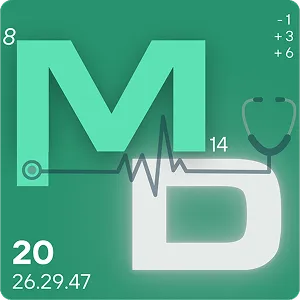
Build an Automated Patient Referral System | Marketing Doctors
The best patients often come from referrals—they're pre-qualified, trust your expertise, and typically have higher lifetime values. Yet most practices leave referrals to chance, hoping satisfied patients will spontaneously recommend their services.
What if you could systematically generate referrals without being pushy or sales-focused? After analyzing referral patterns across hundreds of medical practices, we've identified the key elements that create consistent, automated referral generation.
Here's how to build a patient referral system that runs on autopilot while maintaining the trust and relationships that make your practice special.
The Psychology of Medical Referrals
Why Patients Refer (or Don't):
Trust Factor: They must trust that their friend will have a positive experience
Relevance Factor: They need to know someone who might benefit from your services
Timing Factor: They need to think of you at the right moment
Ease Factor: The referral process must be simple and clear
Value Factor: Both referrer and referee should benefit from the connection
Common Referral Barriers:
Patients forget to mention your practice to friends
They don't know how to explain your services
They're unsure who might benefit from your treatments
The referral process is unclear or complicated
They worry about being pushy or sales-focused
The Automated Referral System Framework
Phase 1: Foundation Building (Weeks 1-2)
Create the infrastructure for systematic referral generation.
Phase 2: Activation Triggers (Weeks 3-4)
Implement automated prompts that remind patients to make referrals at optimal moments.
Phase 3: Optimization and Scale (Month 2+)
Refine the system based on performance data and patient feedback.
Phase 1: Foundation Building
Element 1:
Referral-Worthy Experience Design Before asking for referrals, ensure your patient experience naturally inspires them.
Key Components:
Exceed expectations at every touchpoint
Create memorable moments patients want to share
Solve problems patients didn't know they had
Provide education that helps beyond your treatments
Follow up to ensure satisfaction and continued progress
Element 2:
Clear Referral Value Proposition Patients need simple ways to explain why someone should visit your practice.
Create Simple Talking Points:
"They helped me with [specific problem] in [timeframe]"
"What I love most is [unique aspect of your approach]"
"They're different because [key differentiator]"
"You should try it if you [specific situation or symptom]"
Element 3:
Referral Tracking System Implement systems to track referral sources and outcomes.
Essential Tracking Elements:
How referrals found out about your practice
Which patients are generating the most referrals
Which services get referred most often
Referral conversion rates and patient lifetime values
Follow-up communication with both referrer and referee
Phase 2: Activation Triggers
Trigger 1: Post-Treatment Satisfaction Check Timing:
24-48 hours after treatment
Method: Automated email or text message
Sample Message: "Hi [Name], just checking in after your [treatment] yesterday. How are you feeling? If you're happy with your results, we'd love to help any friends or family members who might benefit from similar care. Simply have them mention your name when they call."
Trigger 2: Milestone Celebration Timing:
When patients reach significant milestones Method: Personal call or special message
Examples:
Completing a treatment series
Achieving specific health goals
Anniversary of first visit
Notable improvements in condition
Sample Message: "Congratulations on [specific achievement]! We're so proud of your progress. If you know anyone who's struggling with [similar condition], we'd love to help them achieve similar results. Here's a special card you can share with anyone who might benefit."
Trigger 3: Seasonal Health Reminders Timing:
Relevant health awareness periods Method: Educational newsletter with referral prompt
Examples:
"National Hormone Health Month: Know someone struggling with fatigue or mood issues?"
"Summer Skin Prep: Share this guide with friends planning their skincare routine"
"Stress Awareness Month: Help friends discover natural stress relief solutions"
Trigger 4: Educational Content Sharing Timing:
When sharing valuable health information Method: Social media posts, newsletters, and patient communications
Strategy: Create shareable educational content that naturally leads to referrals:
Health tips that solve common problems
Myth-busting information about treatments
Patient success stories (with permission)
Educational videos explaining complex conditions
Phase 3: Optimization and Scale
Advanced Referral Strategies:
Strategy 1: Referral Partner Program
Identify your top referring patients and create a special relationship.
Program Elements:
Special recognition and appreciation
Advanced access to new treatments or services
Educational opportunities about health and wellness
Exclusive events or workshops
Small tokens of appreciation (not cash payments)
Strategy 2: Community Education Events
Host events that existing patients can bring friends to.
Event Ideas:
"Lunch and Learn" sessions about specific health topics
Wellness workshops with actionable takeaways
Meet the practitioner events for potential new patients
Health screening events with mini-consultations
Support groups for specific conditions
Strategy 3: Referral-Specific Follow-Up Sequences
Create different communication paths for referrers and referees.
For Referrers:
Thank them for the referral
Update them on their friend's experience (with permission)
Continue providing value through ongoing education
Recognize their support in appropriate ways
For Referees:
Acknowledge the referral source
Provide extra attention during first visit
Follow up to ensure satisfaction
Create positive experience that might lead to future referrals
Making Referrals Feel Natural, Not Forced
DO:
Ask for referrals when patients are genuinely satisfied
Provide clear, simple explanations of your services
Make the referral process easy and straightforward
Focus on helping people rather than growing your practice
Thank referrers appropriately and sincerely
DON'T:
Pressure patients who seem uncomfortable with referrals
Offer cash incentives for referrals (often illegal and always tacky)
Ask for referrals before ensuring patient satisfaction
Make referrals feel like a sales transaction
Ignore referrers after they've made introductions
Technology Tools for Referral Automation
Customer Relationship Management (CRM) Systems:
Automated follow-up sequences
Referral tracking and attribution
Patient communication scheduling
Performance analytics and reporting
Review and Testimonial Platforms:
Automated review requests at optimal times
Social proof collection and display
Referral prompts within review processes
Positive feedback sharing capabilities
Email and SMS Marketing Tools:
Triggered messages based on patient behavior
Segmented communications for different patient types
A/B testing for optimal messaging
Integration with practice management systems
Measuring Referral System Performance
Key Metrics to Track:
Number of referrals generated monthly
Referral conversion rate (referrals that become patients)
Average lifetime value of referred patients
Time from referral to first appointment
Satisfaction scores of both referrers and referees
Success Benchmarks:
15-25% of new patients should come from referrals
Referred patients typically have 20-30% higher lifetime values
Top 20% of patients should generate 60-80% of referrals
Referral conversion rates should exceed 40%
Common Referral System Mistakes
Mistake 1: Only asking for referrals when you need them Solution: Create consistent, ongoing referral generation
Mistake 2: Generic referral requests that don't specify who might benefit Solution: Provide specific examples of ideal referral candidates
Mistake 3: No follow-up with referrers about their friend's experience Solution: Close the loop with appropriate updates and appreciation
Mistake 4: Complicated referral processes that create friction Solution: Make referring as simple as sharing a name or phone number
Mistake 5: Focusing on quantity over quality of referrals Solution: Educate referrers about ideal candidates for your services
Building Your Automated Referral System
Week 1-2: Foundation Setup
Audit current patient experience for referral-worthy moments
Create simple talking points for patients to use
Implement tracking systems for referral attribution
Design automated follow-up sequences
Week 3-4: Launch Automation
Activate post-treatment satisfaction triggers
Begin milestone celebration communications
Create shareable educational content
Test and refine messaging based on initial responses
Month 2+: Scale and Optimize
Analyze referral patterns and optimize timing
Identify top referrers and create special relationships
Develop community education events
Continuously improve based on patient feedback
Ready to Build Your Automated Referral System?
A systematic approach to referral generation can dramatically increase your patient base while strengthening relationships with existing patients. The key is creating genuine value and making referrals feel natural rather than forced.
We help practices design and implement automated referral systems that respect patient relationships while systematically generating high-quality new patients.
Schedule a consultation to design your custom referral system:
Call: (888) 964-0456
Text: (866) 325-5885
Online: marketingdoctors.ai/contact
Let's work together to turn your satisfied patients into your most effective marketing partners.


